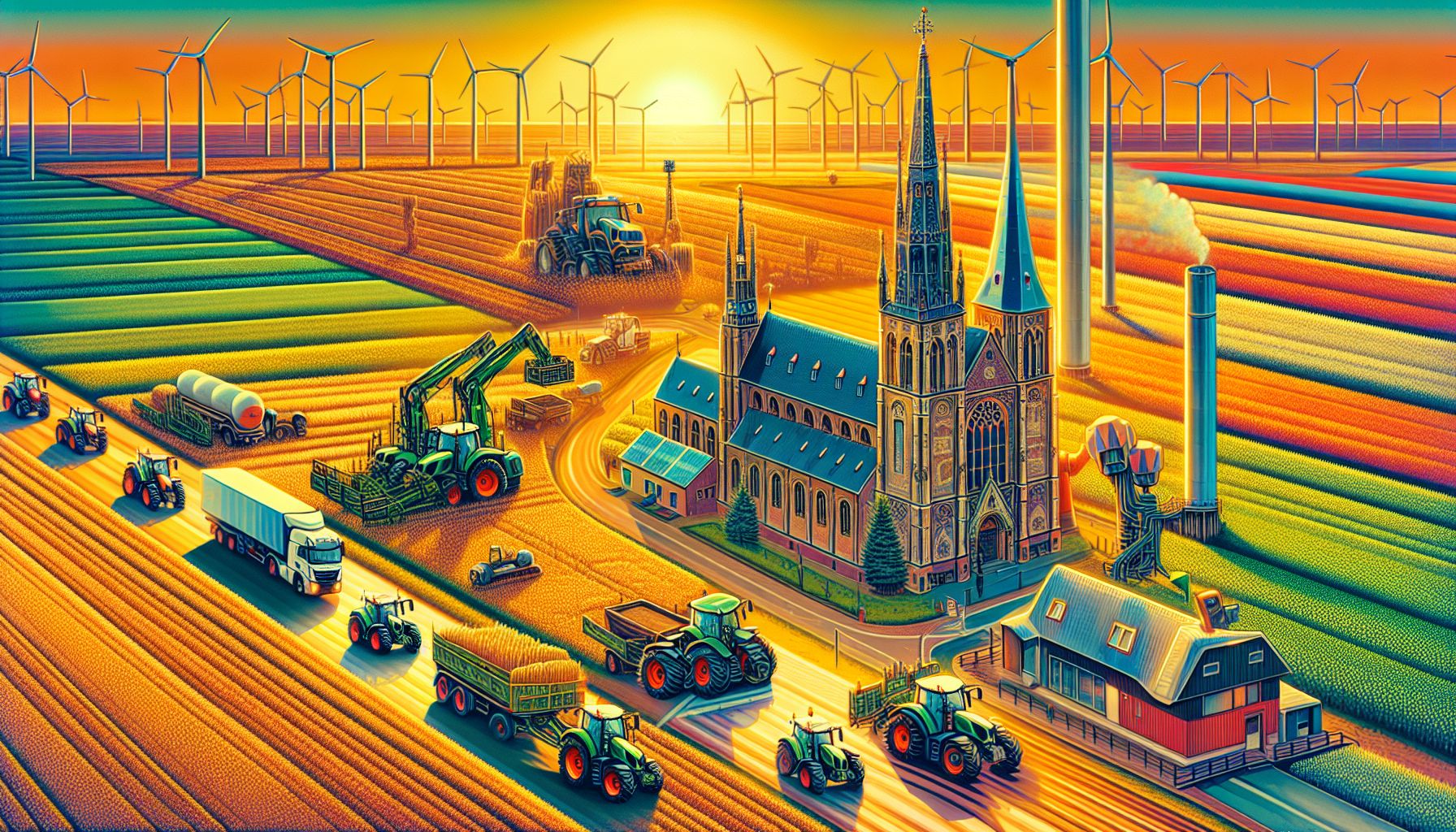Dutch Agriculture Faces Hurdles in Achieving Emission-Neutral Machinery by 2050

Netherlands, Sunday, 21 July 2024.
The Dutch agricultural sector grapples with significant challenges in transitioning to emission-neutral machinery by 2050. While technical solutions exist, widespread adoption of electric, hydrogen, or sustainable fuel-powered tractors remains low due to high costs and lack of regulation. The sector aims for a 55% CO2 reduction by 2030, but progress is slow with only a 0.1 megaton reduction expected from agricultural machinery.
Current Emission Statistics and Goals
In 2021, agricultural machinery in the Netherlands contributed between 1 and 1.3 megatons of CO2 emissions. This stands in stark contrast to the 31.5 megatons from road traffic and 1.7 megatons from mobile construction machines. As part of the Paris Climate Agreement, the Dutch government has set ambitious targets for emission reductions: a 55% reduction in CO2 emissions by 2030 and achieving emission-neutrality by 2050. However, the transition to emission-neutral machinery in agriculture is fraught with challenges, including high costs, lack of regulatory support, and slow adoption of new technologies.
Technological Innovations
Despite these challenges, there are promising technological innovations on the horizon. Prototypes of tractors powered by hydrogen, electricity, and sustainable fuels such as methane are already in existence. Electric tractors with up to 90 kilowatts of power are available on the market, and methane-powered tractors are also being developed. However, widespread adoption is hindered by the high costs of these technologies and a lack of investment from major manufacturers.
Regulatory and Financial Barriers
One of the major obstacles to achieving emission-neutral agricultural machinery is the lack of stringent regulations. Currently, tractors are exempt from the European Commission’s ban on combustion engines by 2035. Additionally, financial support for adopting sustainable technologies is inadequate, with subsidies primarily targeting agricultural companies and not the contractors who provide essential services using these machines. Cumela, an industry association, estimates that agricultural contractors consume about 160 million liters of diesel annually, yet they are often overlooked in subsidy policies.
Potential Routes and Behavioral Changes
To meet the 2050 goals, several routes are being considered, including electrification, hydrogen, robotization, behavioral changes, and the use of sustainable fuels. Behavioral changes such as reduced tillage and increased grazing can also contribute to emission reductions. Electrification appears to be the most viable option for tractors with lower power requirements, while higher-powered tractors may benefit from methane fuel. However, significant investments and clear regulations are needed to facilitate these transitions.
Global Efforts and Collaborative Initiatives
The Netherlands is not alone in its efforts to combat climate change through technological innovations. For instance, Australia’s CSIRO is leading research in carbon management technologies, emphasizing the importance of carbon capture, utilization, and storage (CCUS) as well as nature-based solutions like reforestation. Similarly, the Port of Barcelona has launched an onshore power supply system to reduce emissions from ships while docked, showcasing a commitment to decarbonization and improving air quality. Collaborative initiatives like these are crucial for achieving global emission targets.
Conclusion
Achieving an emission-neutral machine park by 2050 is a formidable challenge for Dutch agriculture. While technological solutions are available, significant barriers such as high costs, lack of regulatory support, and slow adoption hinder progress. A multifaceted approach that includes technological innovation, regulatory changes, financial incentives, and behavioral adjustments is necessary to meet the ambitious emission targets. Collaborative efforts and global initiatives will also play a crucial role in driving the transition towards a sustainable and emission-neutral future.

